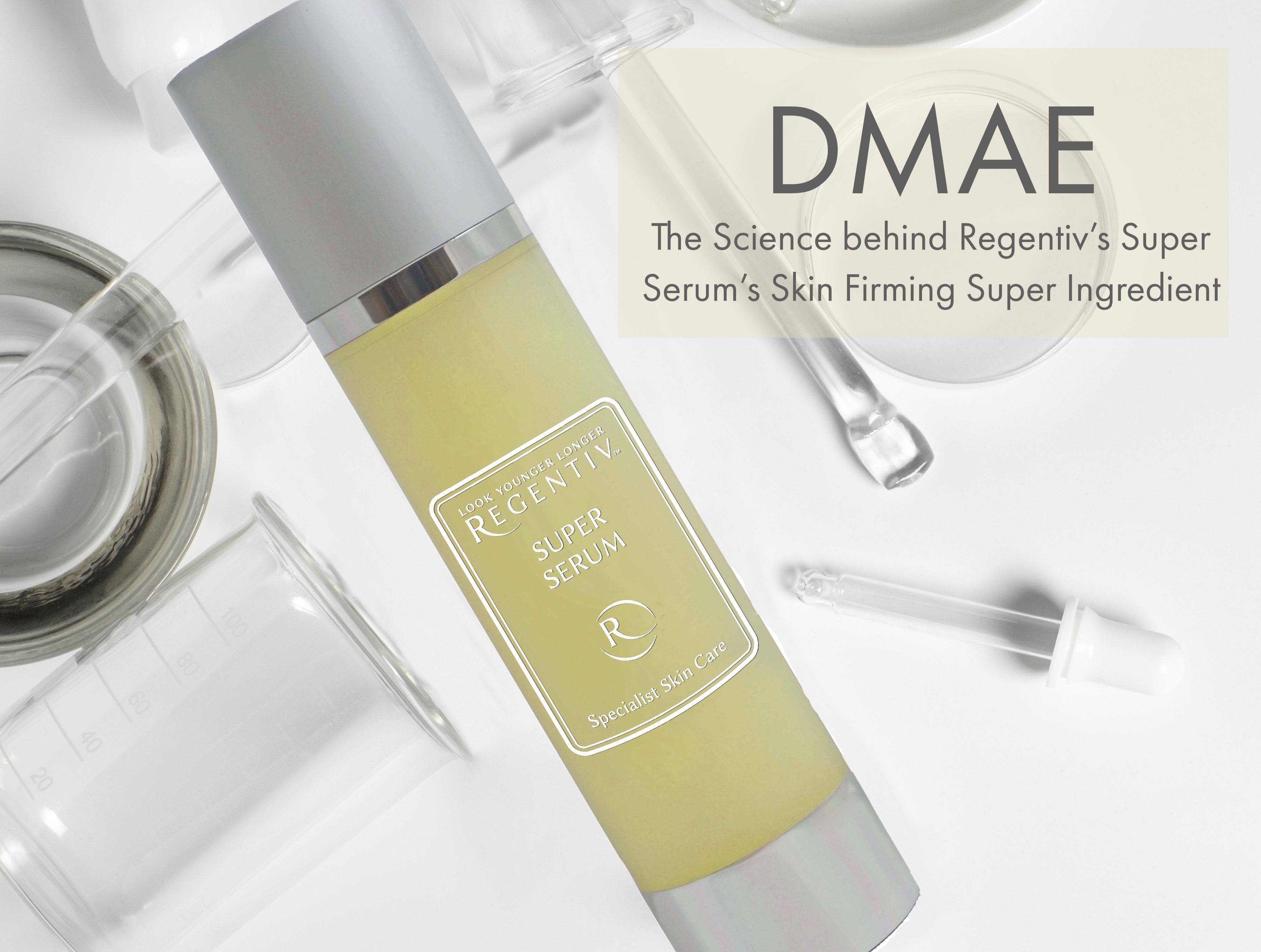
DMAE: The science behind Regentiv's Super Serum's skin firming super ingredient
DMAE – Where is it found?
DMAE is naturally found in oily fish such as salmon, anchovies and sardines. Along with omega-3, DMAE is attributed in part to the beneficial effects of including these in your diet. Small amounts of DMAE are also produced in the human brain. A precursor of the neurotransmitter, acetylcholine, DMAE was initially used in the treatment of several neurological disorders and is widely available today as an oral supplement to boost memory.
DMAE and Anti-Ageing
Several studies have demonstrated that DMAE can clinically improve the overall appearance of aging skin. Documented benefits include diminished forehead lines and periorbital wrinkles, and improved lip fullness and shape after just 16 [1]. Furthermore, DMAE has proven skin-firming ability. In a randomised, split-face study of 30 healthy women, a gel containing 3% DMAE significantly increased skin firmness 45 minutes following application as compared to a placebo gel[2].
How it works? The exact mechanisms by which DMAE exerts these anti-ageing and skin-tightening effects remain to be shown. However, research has demonstrated many properties of DMAE that may contribute to these beneficial effects. These include anti-inflammatory activity and, more recently, the antioxidant ability of DMAE as a free radical scavenger[3]. Free radicals generated by UV light and other sources have long been known as one of the top causes of skin ageing; thus free-radical damage may be prevented by topical DMAE formulations. Finally, as a precursor of acetylcholine, DMAE may also potentially alter muscle contraction below the skin, which may account for the non-surgical ‘facelift’ effect so often used to describe its skin-firming properties.
Discover the multiple anti-ageing and skin-firming properties of this super ingredient in Regentiv's Super Lifting Serum
Dr Susannah Thornhill PhD
1Grossman R. The role of dimethylaminoethanol in cosmetic dermatology. Am J Clin Dermatol. 2005;6(1):39-472Uhoda I, Faska N, Robert C, Cauwenbergh G, Piérard GE. Split face study on the cutaneous tensile effect of 2-dimethylaminoethanol (deanol) gel. Skin Res Technol. 2002 Aug;8(3):164-73Malanga G, Aguiar MB, Martinez HD, Puntarulo S. New Insights on Dimethylaminoethanol (DMAE) Features as a Free Radical Scavenger. Drug Metab Lett. 2012;6(1):54-9



